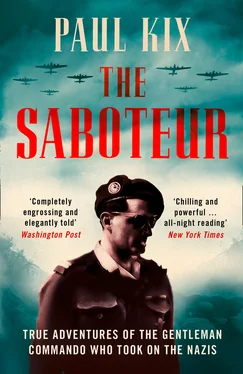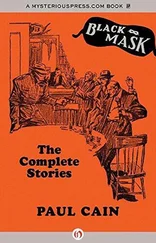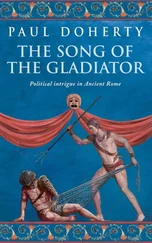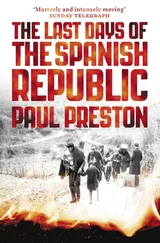The chateau of Villeneuve still rose from the earth, with its neoclassical design, brick façade, and white-stone trim, a stately home that the La Rochefoucauld family had purchased from the daughter of one of Napoléon’s generals in 1861. Beams of sunlight still winked from the windows of the northern wing, a welcoming light that bathed the interior, and all the chateau’s forty-seven rooms, with an incandescent glow. But at the circular driveway at the side of the home, something strange came into view.
German military vehicles.
A cadre of German soldiers seemed to have made the La Rochefoucauld house their own, judging from the armored cars and trucks parked at odd angles. But this wasn’t even the worst news: On closer inspection, the family saw that the chateau’s roof was missing.
My God , Robert thought, trying to absorb it all.
The children clustered together in the driveway, gawking. Then, unsure what else to do, the family made its way to the front door.
When they opened it, Consuelo and her children saw the same stone staircase rising from the entryway to the front hall. But passing above them were German officers, who barely acknowledged their arrival. The Nazis had indeed requisitioned Villeneuve, just as they would other homes and municipal buildings, hoping that the houses and schools and offices might serve as command posts for the French Occupation, or as forward bases for Germany’s upcoming battle with Britain. From the Germans’ apathetic looks, the family saw that the chateau was no longer theirs. “There was absolutely nothing we could do against it,” Robert later said.
Consuelo told her children not to acknowledge the officers, to show them that they were impermanent and therefore unremarkable: Robert would not sketch in any journal who these Germans were, what they looked like, or which one led them. But he and his siblings did record the broad outlines of the arrangement. The Nazis begrudgingly made room for the family. They soon redistributed themselves across one half of the house, so the La Rochefoucaulds could have the other. On the first floor, the officers chose the great room, whose floor-to-ceiling windows looked out on the magnificent manicured gardens, and the dining room, which seated twenty. The family took the salon—where they had once entertained visiting dignitaries and had debated Hitler’s rise to power—and the living room, cozy with chairs, rows of books, and, above the fireplace, the family crest, which depicted a beautiful woman with a witch’s tail—which in earlier times instructed La Rochefoucauld to live fully and enjoy all of life’s delights. The second and third floors—the bedrooms and playrooms for the children, and utility rooms for the staff of twelve—were divided similarly: Nazis on one side, the family on the other. Robert still had his own room, a grand chamber with fifteen-foot ceilings, a private bathroom, and fireplace. But he couldn’t stand the heavy clacking echo of German boots going up and down the second and third floors’ stone staircase. The noise seemed to almost taunt him.
The family and Germans did not eat together. The La Rochefoucaulds set up a new dining room in the salon. They shared the grand spiral staircase because they had to, but the family and its staff never spoke to the Germans, and the Germans only spoke to Consuelo, once they learned she was the matriarch and local head of the Red Cross.
Consuelo’s relationship with these occupying officers was, to put it mildly, difficult. In little time they settled on a nickname for her: the Terrible Countess.
It is easy to understand why. First, Consuelo had built this house. When she and Olivier were married after the Great War, a plump girl who was more confident than pretty, she looked at the ruins of what remained of the La Rochefoucauld estate and told her husband she would prefer it if the rebuilt chateau no longer faced east-west, as it had for centuries, but north-south. That way the windows could take in more sunlight. Olivier obeyed his young wife’s wishes and brick by brick a neoclassical marvel emerged, one that indeed glowed with natural light. Now, twenty years later, the Germans were sullying the chateau, German soldiers who played to type, too, always loud, always shouting Ja! , parking up to seven bulky tanks in her yard and then endlessly cleaning them, meeting in her house, meeting in a tent they set up outside her house, their decorum gauche regardless of where they went, the sort of people who literally found it appropriate to write on her walls.
Then there was the damage to the roof. And though Consuelo learned that a British bomb, and not a German one, had missed the bridge it aimed for a half mile distant during the fight for France and instead flattened the fourth floor of the chateau, she resented that the Nazis hadn’t offered to close the gaping hole above them, especially as the summer became late fall and the temperature turned cold. The Villeneuve staff had to put a tarp over the roof’s remnants, but that did little good. When it rained, water still flowed down the stairwell. Winter nights chilled everyone, brutal hours that required multiple layers of clothing. The bomb had set off a fire that momentarily spread on the second floor, which destroyed the central heating system. Now, before the children went to bed, they had to warm a brick over a wood-fired oven and then rub the brick over their sheets, which heated their beds just enough so they might fall asleep.
Finally, there was Olivier. The family found out that he had been arrested by German forces near Saint-Dié-des-Vosges, a commune in Lorraine in northeastern France, on June 27, five days after the armistice. He was now imprisoned in the sinister-sounding Oflag XVII-A, a POW camp for French officers in eastern Austria known as “little Siberia.” He was allowed to write two letters home every month, which had been censored by guards. What little Consuelo gleaned of her husband’s true experience at the camp infuriated her further.
Given all this, it wasn’t really a surprise to see Consuelo act out against the Germans. On one occasion, a Nazi officer, who was a member of the German cavalry and an aristocrat, wanted to pay his respects to Madame La Rochefoucauld, whose name traveled far in noble circles. When he arrived at Villeneuve, he walked up the steps, took off his gloves, and approached Consuelo, who waited at the entry, all stocky frame and suspicious gaze. He gripped her hand in his and kissed it, but before he could tell her it was a pleasure to stay in this grand home, she slapped him across the face. The Terrible Countess would not be wooed by any German. For a moment, no one knew how to respond. Then the officers, only half joking, told Consuelo a welcome like that put her at risk of deportation.
Robert was his mother’s son. The fact that the Nazi officers were a few rooms away only increased his talk about how much he hated them, those Boche . He was brash enough, would say these epithets just loud enough, that even Consuelo had to shush him. But Robert seemed not to care. His olive complexion reddened with indignant righteousness when he listened to Charles de Gaulle’s speeches, and even after the German high command in Paris banned the French from turning on the BBC, Robert did it in secret. He never wanted to miss the general’s daily message. Oftentimes, to evangelize, he would travel across Soissons to the estate of his cousin, Guy de Pennart, who was his age and shared, roughly, his temperament. Guy and Robert talked about how they were going to join the British and fight on. “I was convinced that we had to continue the war at all costs,” Robert later said.
He was seventeen by the fall of 1940 and had graduated from high school. He wanted to join de Gaulle but wasn’t sure how. One didn’t “enlist” in the Resistance. Even a well-connected young man like Robert didn’t know the underground routes that could get him to London. So he enrolled at an agricultural college in Paris, ostensibly to become a gentleman farmer like his father, but, more likely, he went to meet people who might help him reach de Gaulle.
Читать дальше












